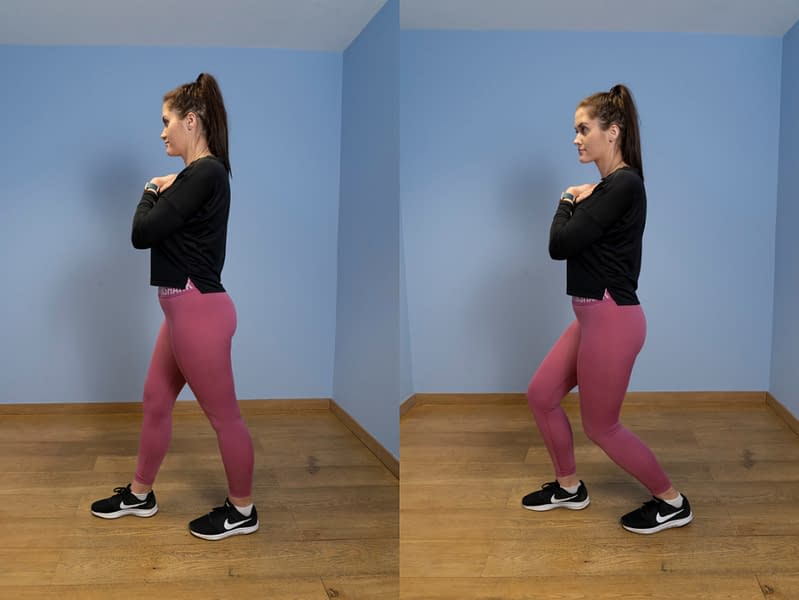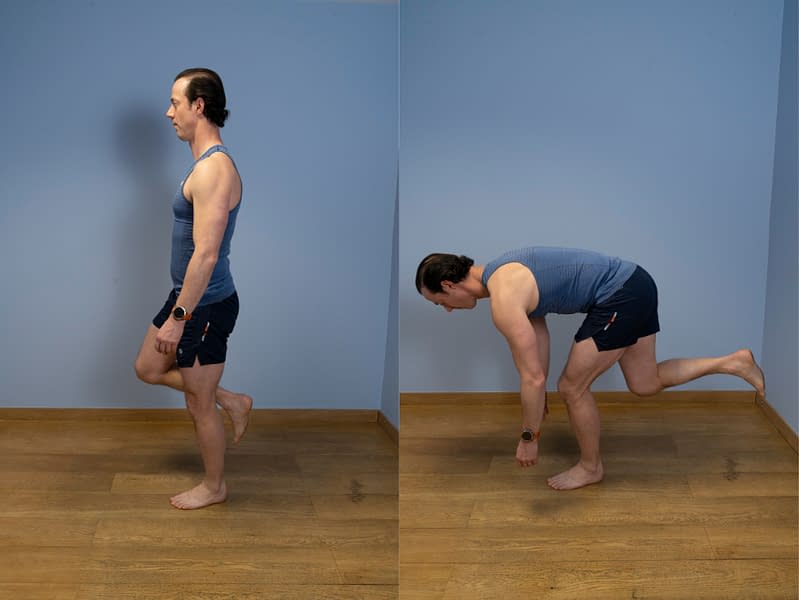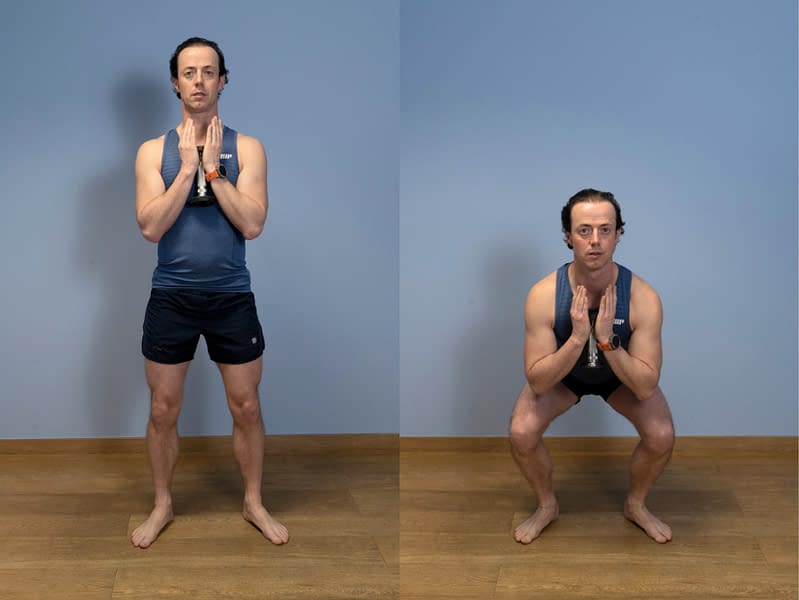Patellofemoral Pain Syndrome (PFPS) Advanced Exercise Programme
Aim to perform this programme a minimum of once per day unless prescribed otherwise. As with any new exercise, start slowly (repetitions as able) and build up as you are able within the guidelines below.
Pain should not exceed 4/10 whilst completing this exercise programme.
1. Split squat
- Place one foot forward and the other back to form a comfortable stride with the feet hip-width apart – you can gently hold on to something for balance.
- Keep the chest up and core engaged whilst simultaneously bending both knees so that the hips lower directly downwards – emphasis should be placed on pushing up through the front foot and keeping the knee in line with the hip and ankle.
- With the trailing knee just of the floor, hold this position for a count of 3 seconds before pushing down through the feet to straighten the knees and return to the starting position.
2. Single leg toe touch
- Perform this exercise standing on the affected leg and have a wall/stable object nearby to assist with balance.
- Shift your weight on to the affected leg and ‘hover’ the other leg off the floor.
- Bend forward from the hip to move towards touching your toes.
- At the same time, the trailing leg should stay straight and will travel backwards to act as a counterbalance whilst keeping your spine straight
- As you get close to touching your toes, you should feel a pull in the hamstrings and buttock of the standing leg.
- Squeeze the buttock muscles to reverse the movement and return to standing.
- To progress, hold a small amount of weight in the opposite hand to the leading leg and gradually increase this as strength develops.
3. Weighted squat
- Stand upright with your feet hip-width apart and a weight placed evenly across your shoulders (back squat) or holding it securely against your chest (goblet squat).
- Engage the abdominal region and in a controlled manner, sit back as if you are sitting into a chair.
- At the same time, your head and chest will come forwards to maintain your balance, aim to keep your back straight.
- Go down as far as you feel comfortable or until your thighs are parallel with the floor.
- Come back up to standing and repeat.
We recommend consulting a musculoskeletal physiotherapist to ensure exercises are best suited to your recovery. If you are carrying out an exercise regime without consulting a healthcare professional, you do so at your own risk. If you have any concerns whilst completing these exercises, please contact a healthcare professional.
More Plans
These are some simple strengthening exercises for the quadriceps and hip stabiliser muscles. These exercises can be performed one to two times per day. It is safe and normal to have some discomfort in the knee, but these are low-level exercises that should be non-provocative. Pain should not exceed 4/10 on your perceived pain scale whilst completing this exercise programme.
- 0
- 1
- 2
- 3
- 4
- 5
- 6
- 7
- 8
- 910
These are some more advanced exercises that will aim to strengthen and mobilise the hip and knee joint in more functional positions, such as standing. The aim is to improve the strength and stability of key muscles that support your knee during functional activities. This programme can be performed every other day. As these exercises are performed in a weight-bearing position, it is safe and normal to have some low-level discomfort during these exercises. Pain should not exceed 4/10 whilst completing this exercise programme.
- 0
- 1
- 2
- 3
- 4
- 5
- 6
- 7
- 8
- 910


